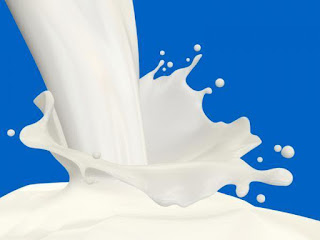Although many consider it disgusting,
mucus does impart some beneficial effects in the body. Mucus forms a thin film that covers the surface of the mucous membrane, which lines the digestive and breathing tracts, protecting against a number of mechanical, temperature-related and chemical irritations.
Mucus itself consists of various proteins, sugars, salts and
immune factors, as well as enzymes. Since those with respiratory ailments, such as
colds and asthma, tend to produce excess mucus, the substance is more associated with being a liability than a protector.
While a number of foods have been linked to “excessive”
mucus production, milk has gotten an especially bad rap. The belief that
milk increases mucus production dates back to the 12th century. But like many other food myths, this long-held belief isn’t true.
As an asthmatic, I’ve been advised by doctors that I should steadfastly avoid drinking
milk because it would increase mucus production, thus obstructing my bronchial tubes. Despite this advice, I’ve never noticed any particular increase in asthma symptoms after eating or drinking any type of dairy food. Research examining the connection has found no actual relationship.
In one study, a group of people who believed that
drinking milk increased mucus flow were given milk and a beverage that had the same consistency as milk but contained no actual milk. The subjects reported that both beverages equally increased
mucus release. The study authors concluded that those who think that drinking milk increases mucus production often find that it does.
Milk does not increase
mucus production, though anything that irritates the breathing tract does. Milk is not in that category. Nor are any other dairy foods. Milk also does not increase or bring on asthma symptoms, which are more often related to exposure to allergens than to
drinking milk.






















